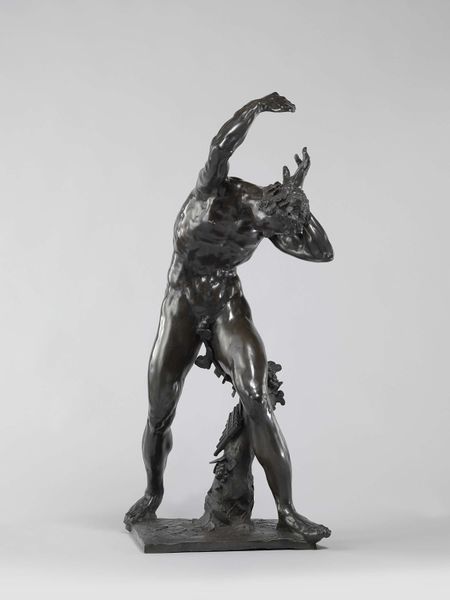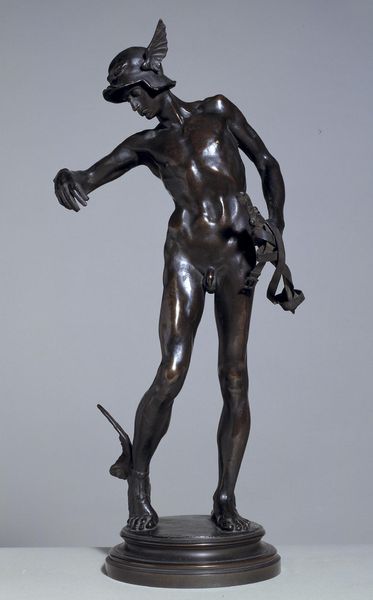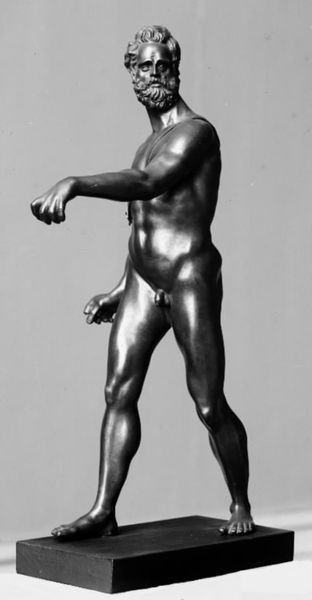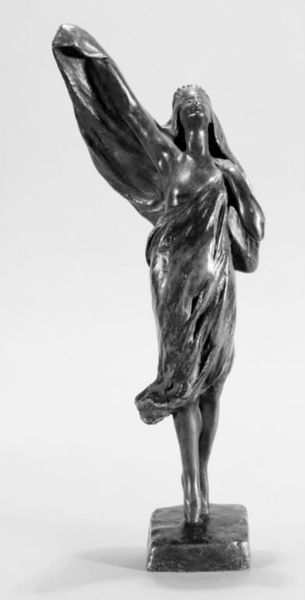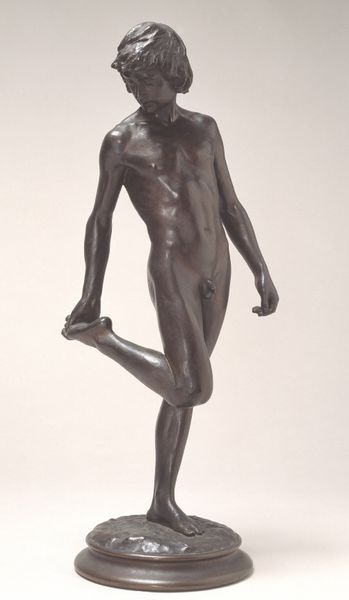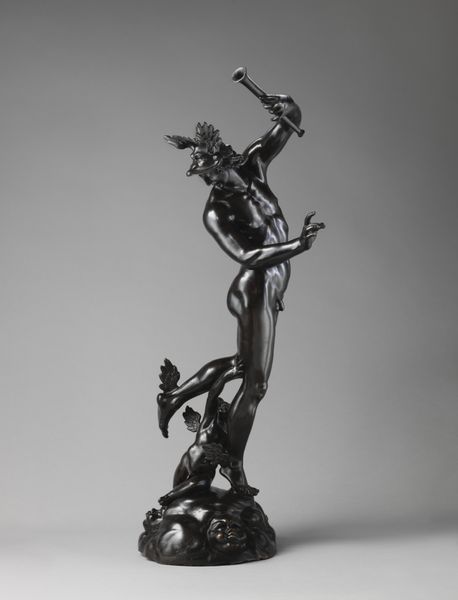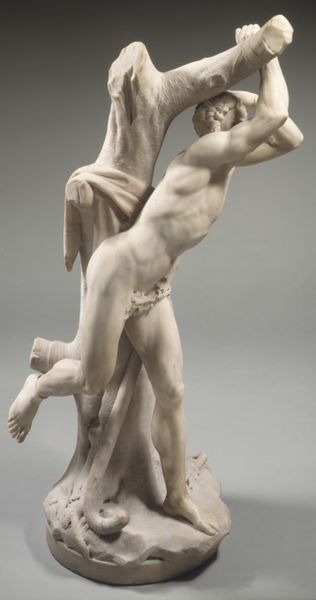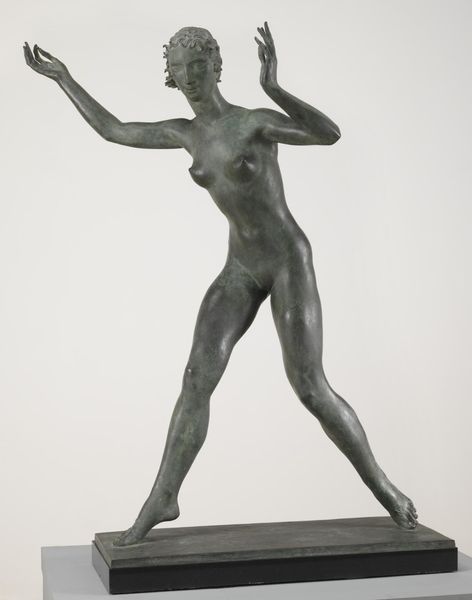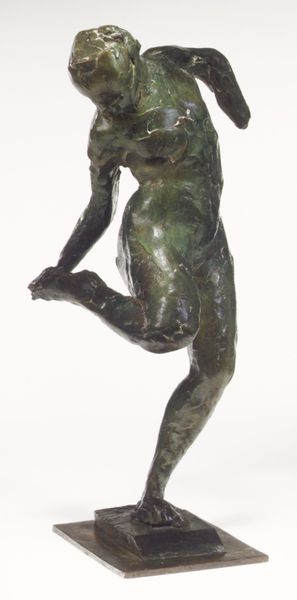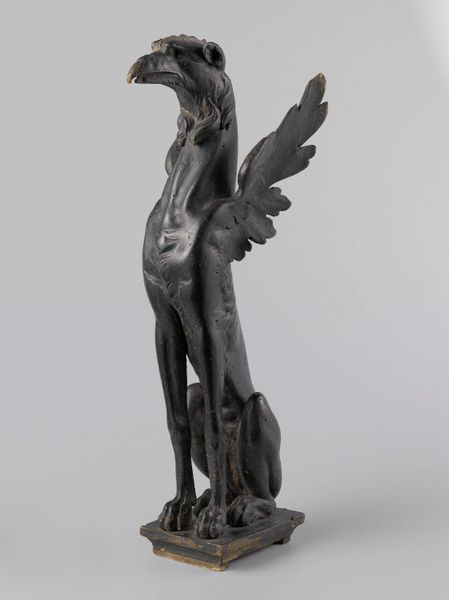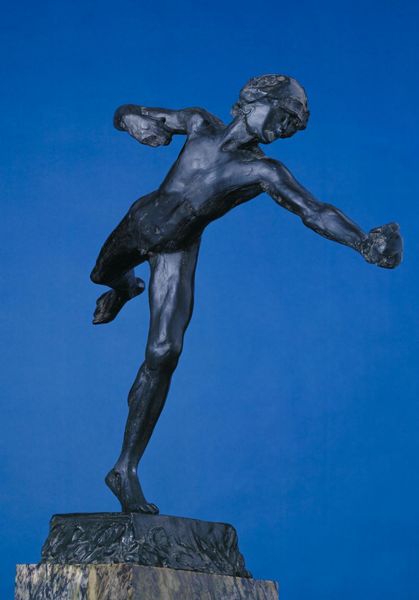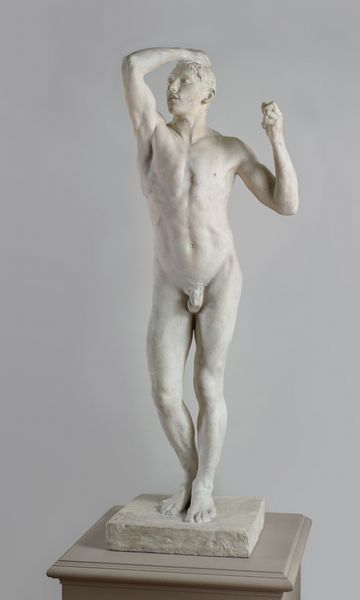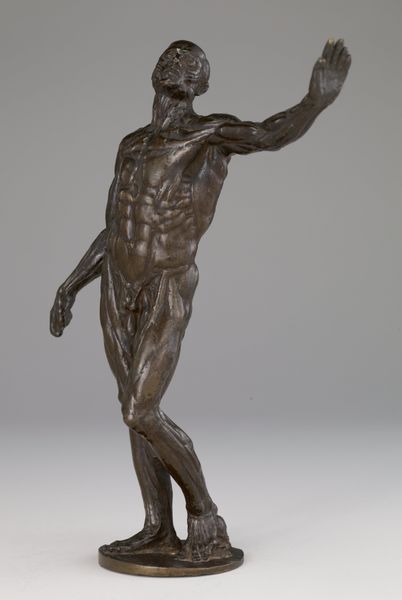
bronze, sculpture
#
neoclacissism
#
bronze
#
figuration
#
ancient-mediterranean
#
sculpture
#
nude
Dimensions: height 210 cm, width 70 cm, depth 90 cm, weight 330 kg, diameter 25 cm
Copyright: Rijks Museum: Open Domain
Editor: This is Francesco Righetti’s “Mercurio volante,” created around 1781 or 1782. It’s a bronze sculpture, and what strikes me is the incredible sense of movement captured in a static medium. How can we understand the symbolism at play here? Curator: Mercury, or Hermes, as the Greeks called him, is rich in symbolic associations. Notice the winged helmet and sandals – emblems of swiftness and his role as a messenger. But look closer. What else do you see? Editor: Well, his arm is raised, pointing upward, almost like a conductor. Is that significant? Curator: Absolutely. It speaks to Mercury's role as a mediator, connecting the earthly and divine realms. The gesture itself, reaching towards something unseen, hints at aspiration and the pursuit of knowledge, ideas so prominent in Neoclassical thought. The nudity, too, isn't merely aesthetic; it echoes the idealization of the human form prevalent in ancient Greek sculpture. How do you think Righetti used these established images of Mercury? Editor: It’s interesting that the piece also shows movement but yet it's frozen in a specific moment, creating an intriguing tension, with Neoclassical ideals about history too. Curator: Precisely. It is a memory of ancient history presented as eternally occurring. What cultural memories do you think someone in the 1780's brought to seeing an artwork such as this? Editor: That's fascinating! I hadn't considered all the layers of meaning embedded in this one figure. So it is much more than just a representation of the Roman god Mercury, then. Curator: Indeed, it is a constellation of symbols, echoing classical ideals, Renaissance interpretations, and the aspirations of its own time.
Comments
rijksmuseum over 2 years ago
⋮
This figure of Mercury in flight, the epitome of nimble elegance, is one of twelve pieces made by Righetti for Welgelegen Pavilion near Haarlem. This time, he choose not to copy a work from Antiquity, but a bronze by the 16th-century sculptor Giambologna.
Join the conversation
Join millions of artists and users on Artera today and experience the ultimate creative platform.
